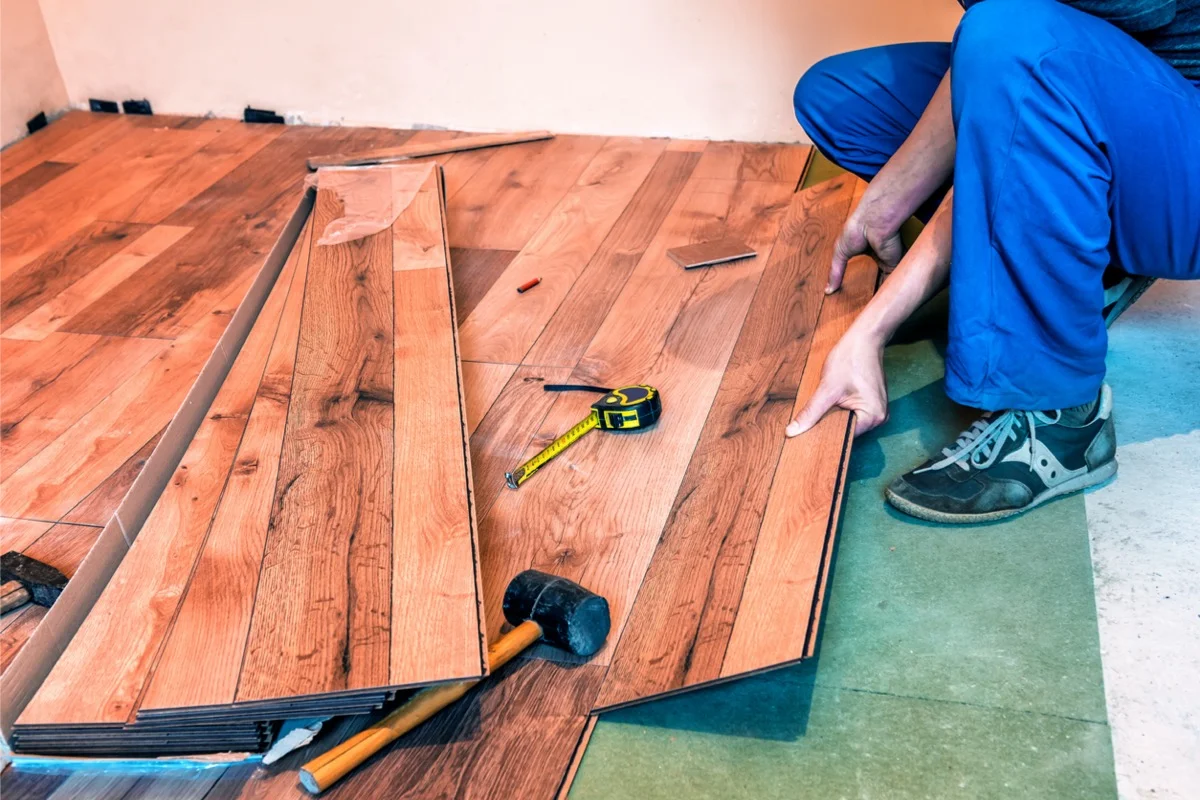It’s important to keep up with dusting and mopping your floors. Avoid using soap-based cleaners, as these can damage the surface.
Wipe up spills right away. Scuff marks can be removed by buffing with a slightly damp cloth. Place walk-off rugs at doorways to help prevent dirt, grit and debris from tracking on your floors.
Sweep and Dust Regularly
Grit, dirt, sand and other contaminants can scratch and damage most types of hard floors. Sweeping and dusting daily with a soft-bristled broom or a vacuum cleaner with a hard floor attachment will help keep these harmful substances off your floors. Using doormats outside each entrance will also prevent dirt, grime and other substances from being tracked inside. Asking family members and guests to wipe their shoes can minimize the amount of tracked-in grit, too.
Blotting up spills as opposed to scrubbing them will also prevent permanent stains on your floors. Wood flooring absorbs water, and if it is exposed to excessive amounts of moisture, it can swell and even crack. Investing in a hygrometer and keeping humidity levels within the recommended range will keep your floors looking like new and prolong their lifespan. Adding protective mats at entryways and under rolling furniture (avoid rubberized mats, however) can further protect your flooring surface. Also, placing rugs in high-traffic areas will catch any loose debris.
Mop Regularly
It’s important to mop your floors on a regular basis—every two or three weeks is a good cadence, but multiple times a week (or even daily) may be more appropriate in high traffic areas. Be sure to only use clean water when mopping; dirty water can cause residue buildup.
Keeping your floors clean on a daily basis helps prevent the accumulation of dust and dirt particles that could scratch or dull the finish. It also ensures that crawling infants and toddlers aren’t tracked in contaminants like de-icing chemicals, oil, or sand that can irritate their skin and cause respiratory distress if ingested.
Other critical maintenance steps include putting down doormats at every entrance to trap and remove hard dirt particles, using felt pads under furniture legs to protect the flooring surface from scratches, and regularly moving heavy or sharp-edged furniture so it doesn’t leave marks. These small efforts help keep your flooring looking newer for longer, and may even extend the lifespan of your floor.
Wipe Up Spills Right Away
Whether your flooring is carpet, vinyl or hardwood, you’ll want to keep it protected and clean. Use a quality doormat at all entrances to prevent tracking in dirt, sand and grit that can scratch your floors. Ensure that proper floor protectors are under all furniture pieces to minimize indentation.
Cleaning up spills right away can help preserve your flooring’s finish and avoid permanent staining. The use of a non-toxic cleaner (like a mild soap and water solution) will eliminate most stains from coffee, tea, wine, fruit juice, oil, lipstick, pencil, crayon, and more.
It’s also recommended to lower your blinds during bright times of the day to minimize direct sunlight, as it can cause fading and discoloration. Regularly mopping your floors with a cleaning solution designed for your specific floor type will keep them looking like new. Be sure to wring your mop out thoroughly between cleaning to prevent excess residue build-up that can leave a dull appearance.
Don’t Over-Clean
Hardwood floors are a beautiful addition to any home but are also a major investment. Keeping them looking their best isn’t just about cleaning, but preventing scratches and other damage.
The key to good hardwood floor care is regular sweeping, vacuuming and mopping with water that’s only slightly damp. The damp mop method removes dirt from the surface of the floor before it can scratch it and helps prevent sticky residues on the wood. Spills should be wiped up right away with a soft cloth.
If you have a real hardwood floor, use mats at the entrance to trap dirt and moisture before it can be tracked into the flooring. Felt pads under furniture legs and drip trays for potted plants can help protect the flooring from dents and scrapes. Lower blinds during bright times of the day to minimize direct sunlight, which can cause discoloration on some hardwood floors.




